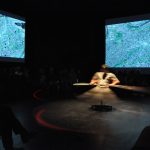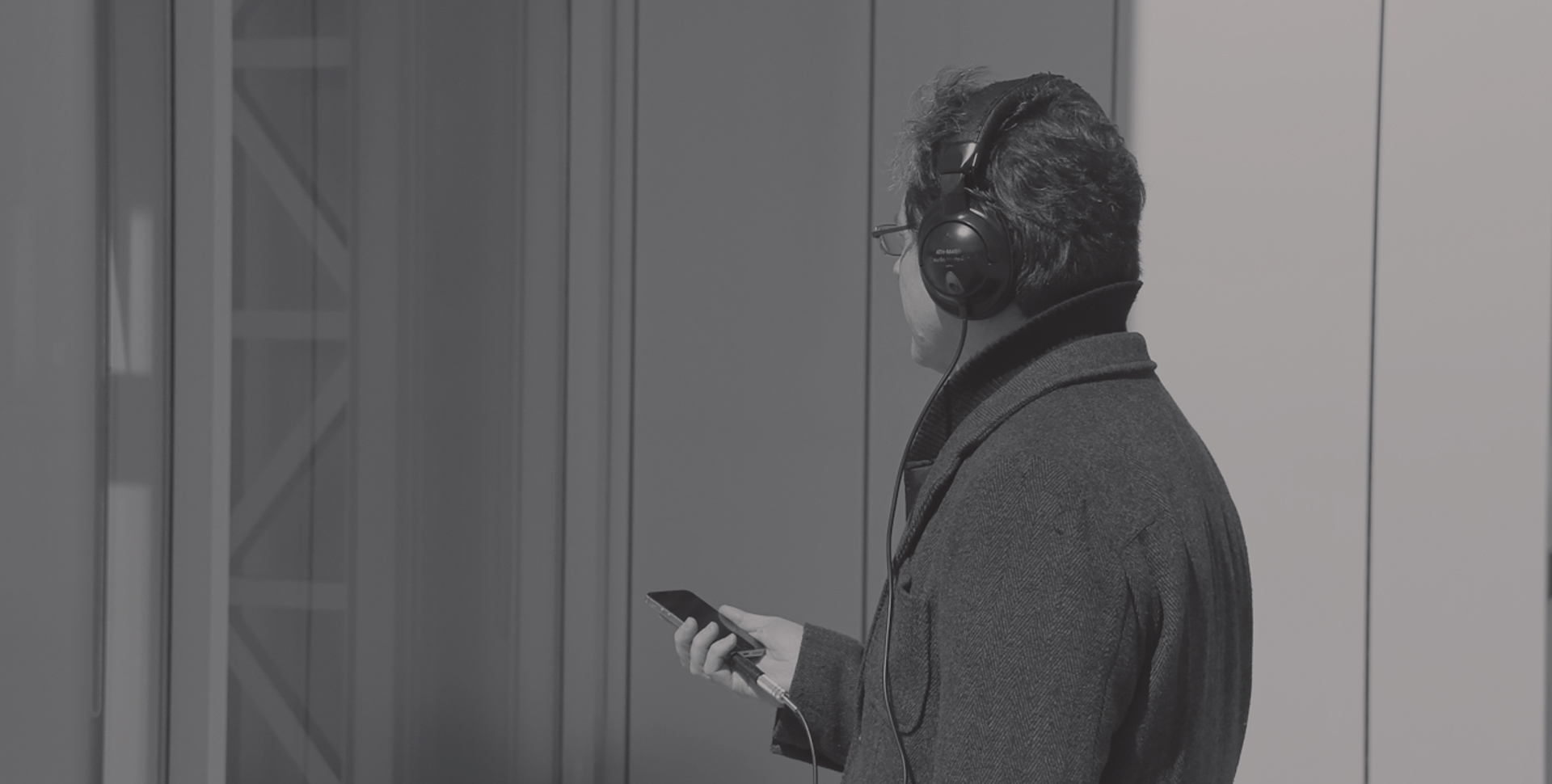“TOUR(IST)” by James Partaik, Luc Lévesque, Hernando Barragan
Title:
- TOUR(IST)
Artist(s) and People Involved:
Exhibiting Artist(s):
Symposium:
- ISEA2016: 22nd International Symposium on Electronic Art
-
More artworks from ISEA2016:


Creation Year:
- 2016
Medium:
- Interactive soundwalk
Artist Statement:
The app, TOUR(IST), is a mobile experience, an augmented soundwalk through the urban landscape. The User can take interactive “sound tunnels”, urban shortcuts revealing a series of acoustic ambiances creating a stimulating listening experience, a mobile audio voyage through the urban environment. Playing with the usual codes of spatial representation, the app TOUR(IST) is an augmented soundwalk. TOUR(IST) offers urban shortcuts, virtual displacements and an immersive experience in a new acoustic space and ambience. By unveiling a series of 3D ambisonic recordings, TOUR(IST) creates “sound tunnels”, trajectories emanating from the actual location of the User. TOUR(IST) reveals a series of acoustic ambiances that incrementally create a whole new way of experiencing the city. Amidst the new urban soundscape thus created, the User develops a new sensory rapport with his or hers immediate environment.
A new urban cartography is developed, a hybrid space in which the mobile User generates in real time, a listening experience while walking through the urban environment around the gallery of ISEA. This urban grid is superimposed on a network of data that, although immaterial, is based on the same nodal logic. Both are made up of intersecting points and articulations of lines that enable functional movement. The act of travelling outside the grid (be it the urban fabric or the data array), of choosing to proceed along parallel paths, appears difficult to reconcile with that logic. This project aims at an exploration that is contrary to normal experience of the city, as it involves plotting transverse lines through the public and private spaces. Each of these trajectories will be in the form of sound tunnels, “wormholes” that will make it possible to move from one point to another by passing through every looming obstacle— somewhat like a wave passing through solid material. A hybrid space of data collection and a mobile device enables this real soundwalk and virtual journey through the neighbourhood of ISEA, offering alternatives to its rectilinear nature.
Sampling sounds from buildings and the urban space surrounding the gallery, data is captured to create a virtual tour of the neighbourhood. This series of recordings, made in straight trajectories, are like “core samples” from drilling; they reveal simultaneously the various occurrences of sound phenomena of the urban core, from the infra-perceptible to the ephemeral sound event. The samples present the User with a series of related soundscapes from the area surrounding the main gallery explored by foot by the User. TOUR(IST) takes advantage of the integrated compass, GPS, tactile screen and binaural sound processing capabilities of the iPhone, enabling the User to move through the “sound tunnels”, either travel towards specific place in the city or generate a 360-degree sound experience, a total-field collage of sound just beyond his immediate location. These tunnels carry the User through obstacles from space to space, encounter to encounter. The User is like tourist (according to John Cage), like a wave, travelling through space and matter, confounding normal movement and penetrating both private and collective spaces.
The sound database of TOUR(IST) will include sounds created during the ISEA workshop and urban intervention: ConcreteCity. An ultralight approach to urban interventions orchestrated by Insertio. The urban sound intervention aims to incite participants to conceptualize, construct and implement an ultralight, large-scale wireless intervention of audio elements inserted in a public space, transforming a section of the city into a sound experience. The work will be achieved through a hands-on approach constructing and deploying an ephemeral wireless ubiquitous computing network, by temporarily grafting actuators, small devices “plankton”, that inhabit objects and urban infrastructures, (…can a stop sign shudder?). These urban elements, diverted from their primary use, create a furtive audio orchestration. The resulting composition is a large-scale spatialization of sound with multiple points of listening. The spatial forms include elements of the site’s material things, social activities, phenomena and the processes that are concomitantly taking place, specific to a time, place and culture. Our approach focuses on the imagination of urban sites, their materiality, usage and memory. By interfering with what is normally a given “state” of operations, the intervention reveals an “augmented everyday soundtrack” leaving the field open to exploring the potential of the sounds of the city, the interaction with urban spaces and objects and the diverse interpretations of what surrounds us.
TOUR(IST) explores the theme of New Media and Cultural Heritage. As a listening experience created through the recording, archival and retrieval of fragments of sounds: from bursts of conversation or moments of daily routine (public and domestic interiors) disparate places (places of worship, shopping centers, local businesses, etc.). It is a world that is revealed, a condensed auditory form where the experience of the city itself reveals the simultaneity of its diverse and multivalent expressions.
TOUR(IST) explores surrounding digital archiving technologies, investigating new hardware and software interfaces for storage and retrieval of archived data, posing interesting questions like: what kinds of new materials and subjects are being archived?, what are the assumptions that lie behind these storage techniques?, and how the resulting representations shape our perception of the original information?, it also explores what happens when a particular kind of map, developed for a specific type of data, is used to present another kind of information, within its historical precedents and social, political and technological implications.
Sponsors:
SSHRC, Social Sciences and Humanities Reasearch Coucil, Canada and The Fonds de recherche du Québec – Société et culture (FRQSC)
Category:
All Works by the Artist(s) in This Archive:
- James Partaik

TOUR(IST)
[ ISEA2016]
Dubai Sound Transects
[ ISEA2014]- Luc Lévesque

TOUR(IST)
[ ISEA2016]- Hernando Barragan

TOUR(IST)
[ ISEA2016]





